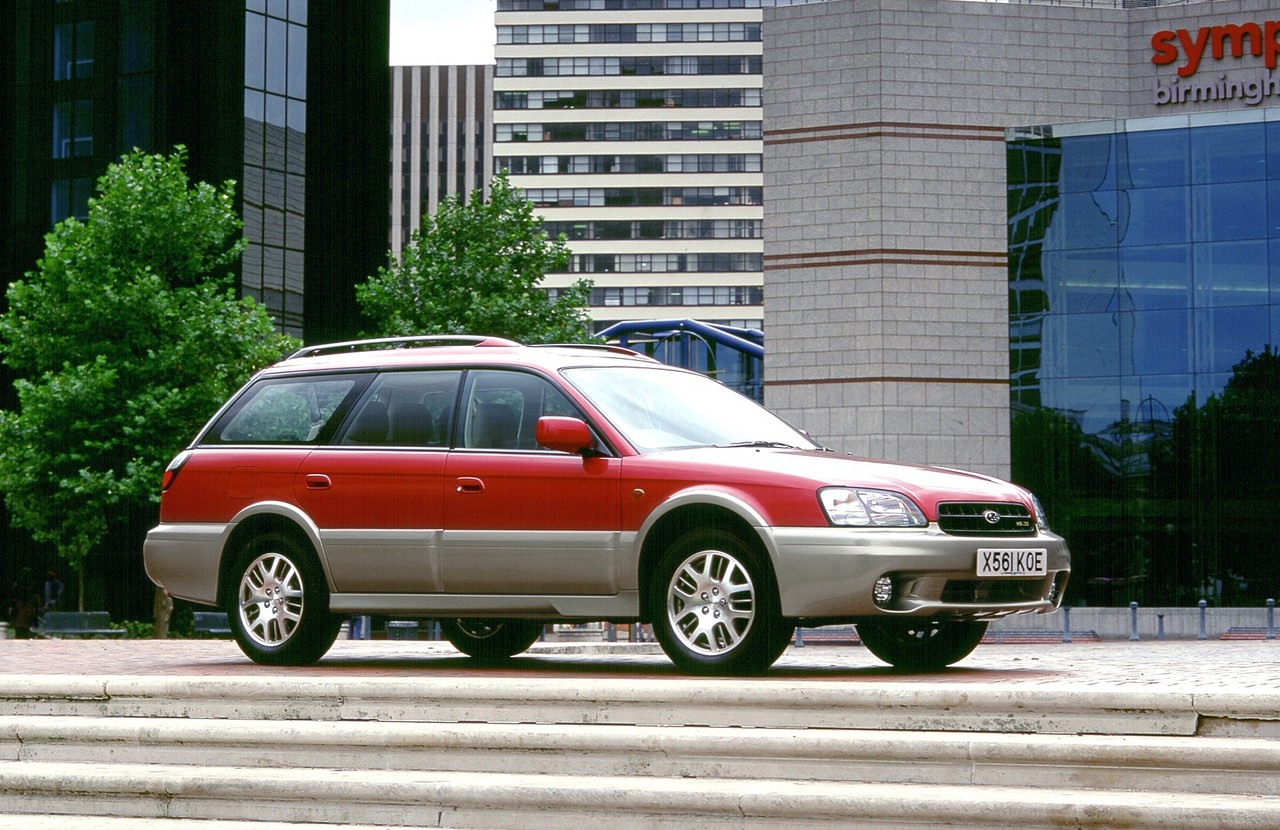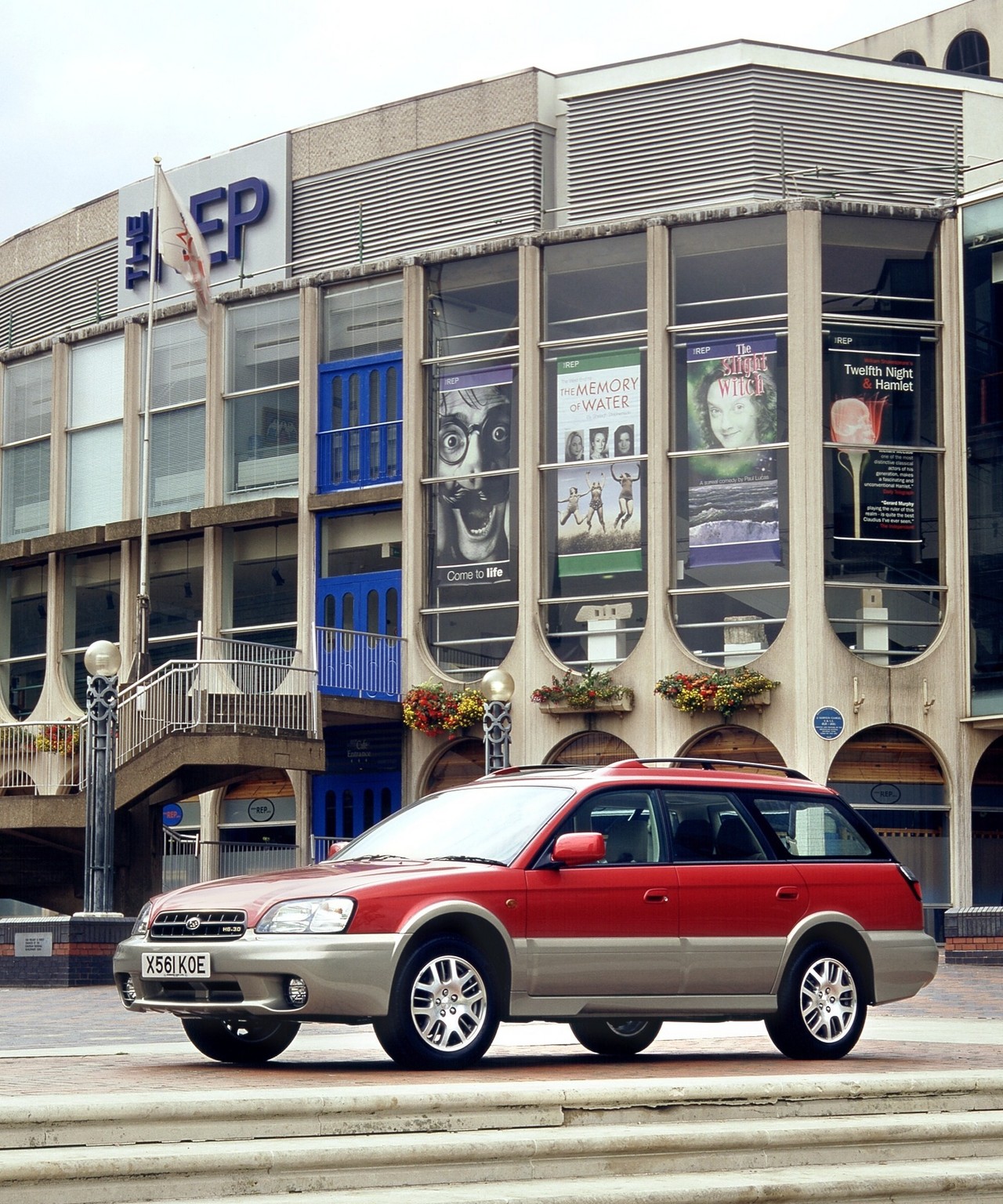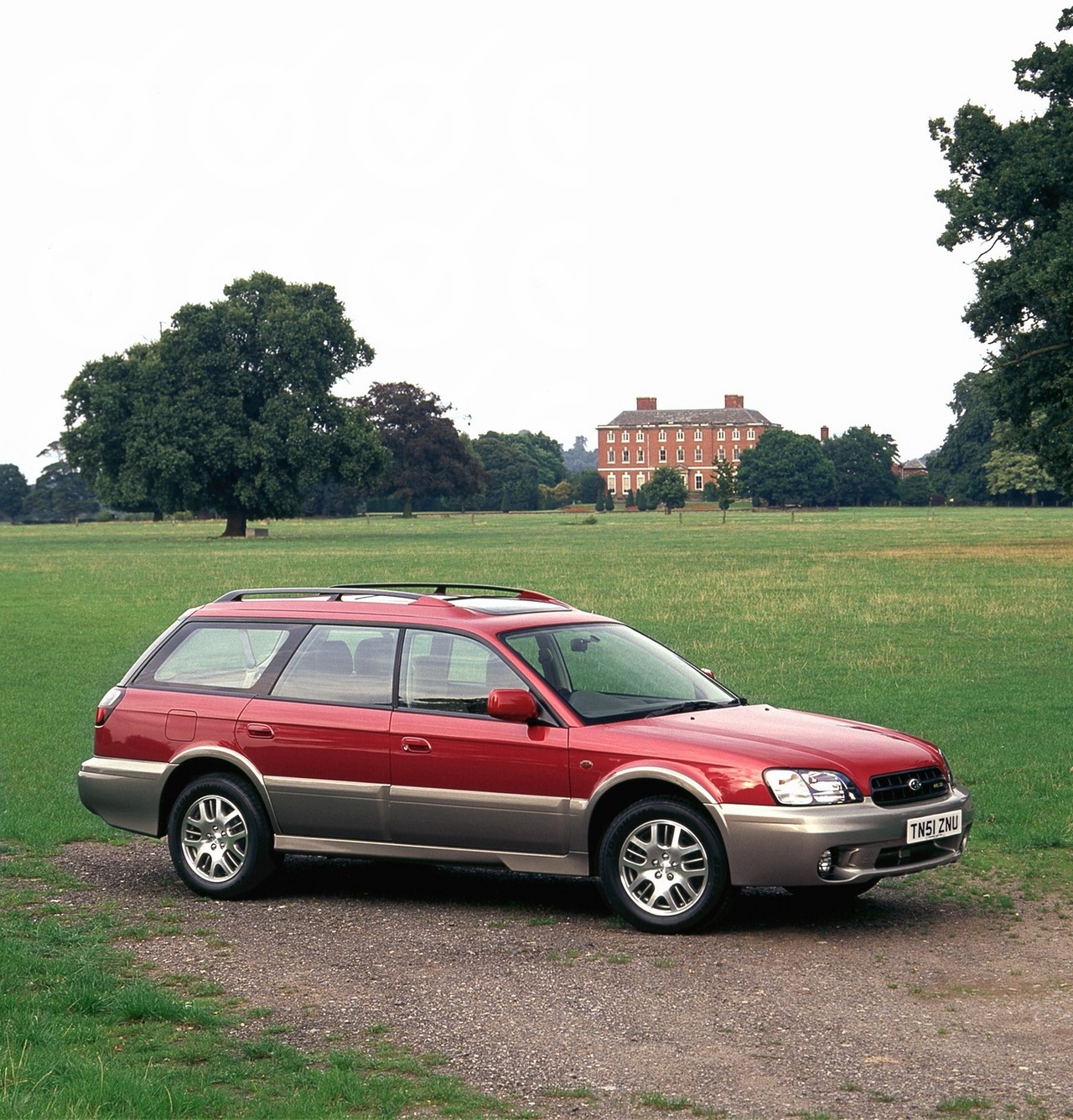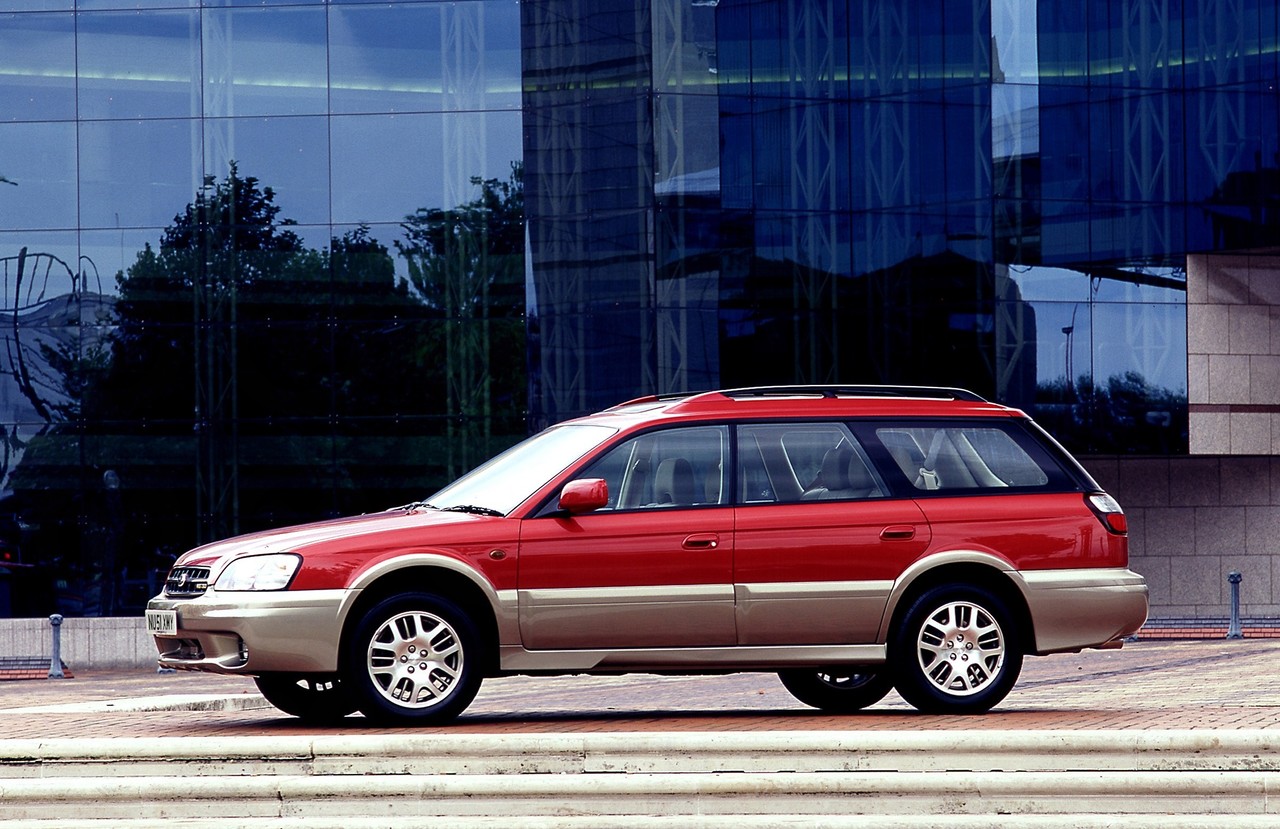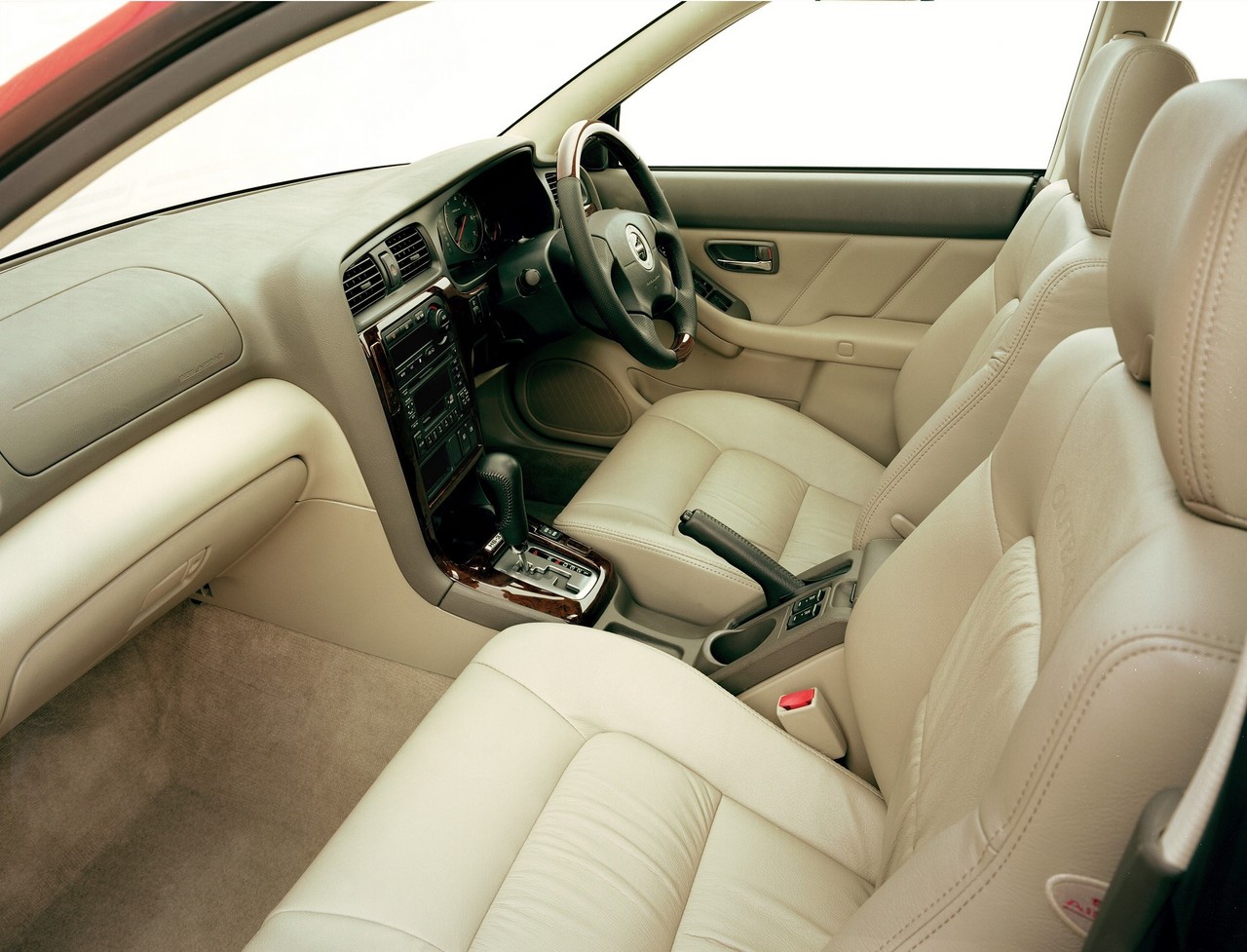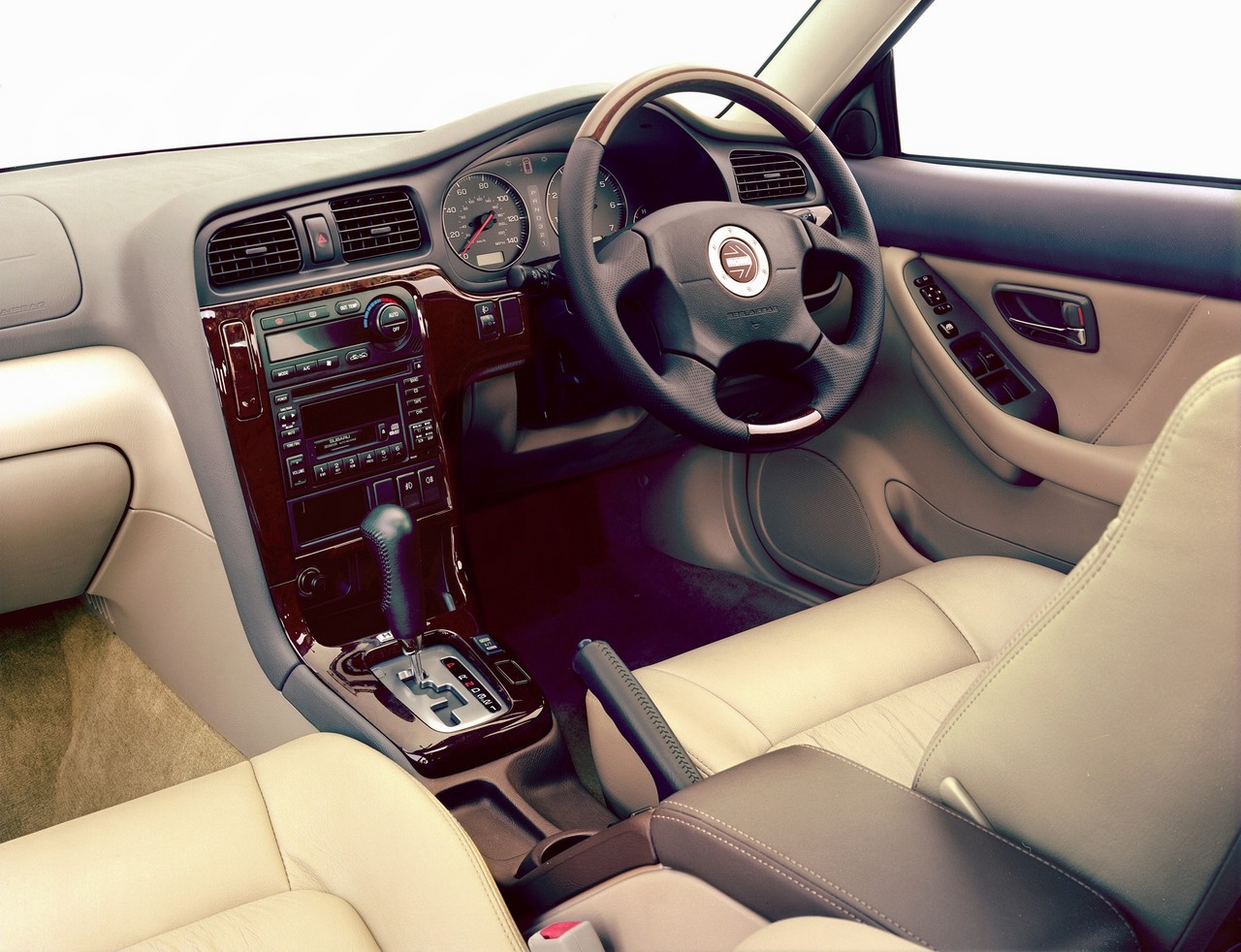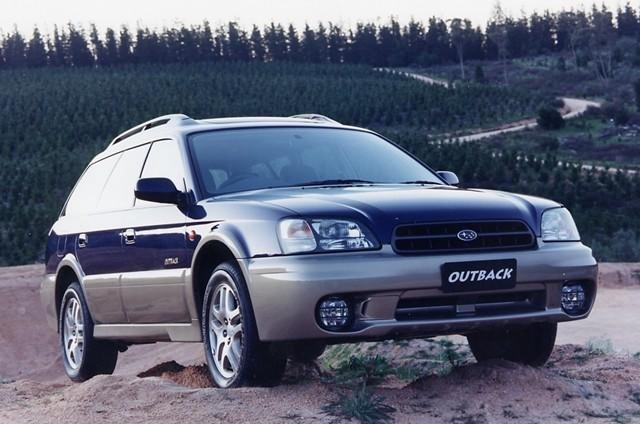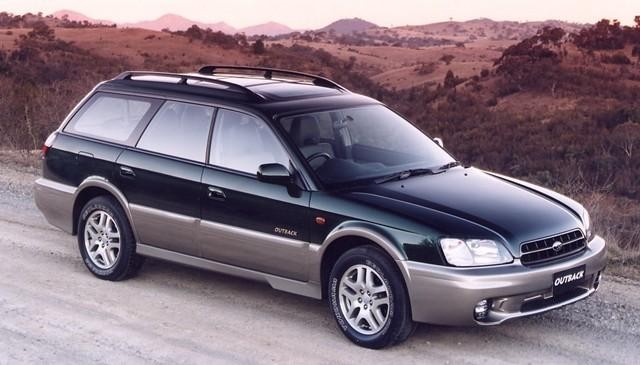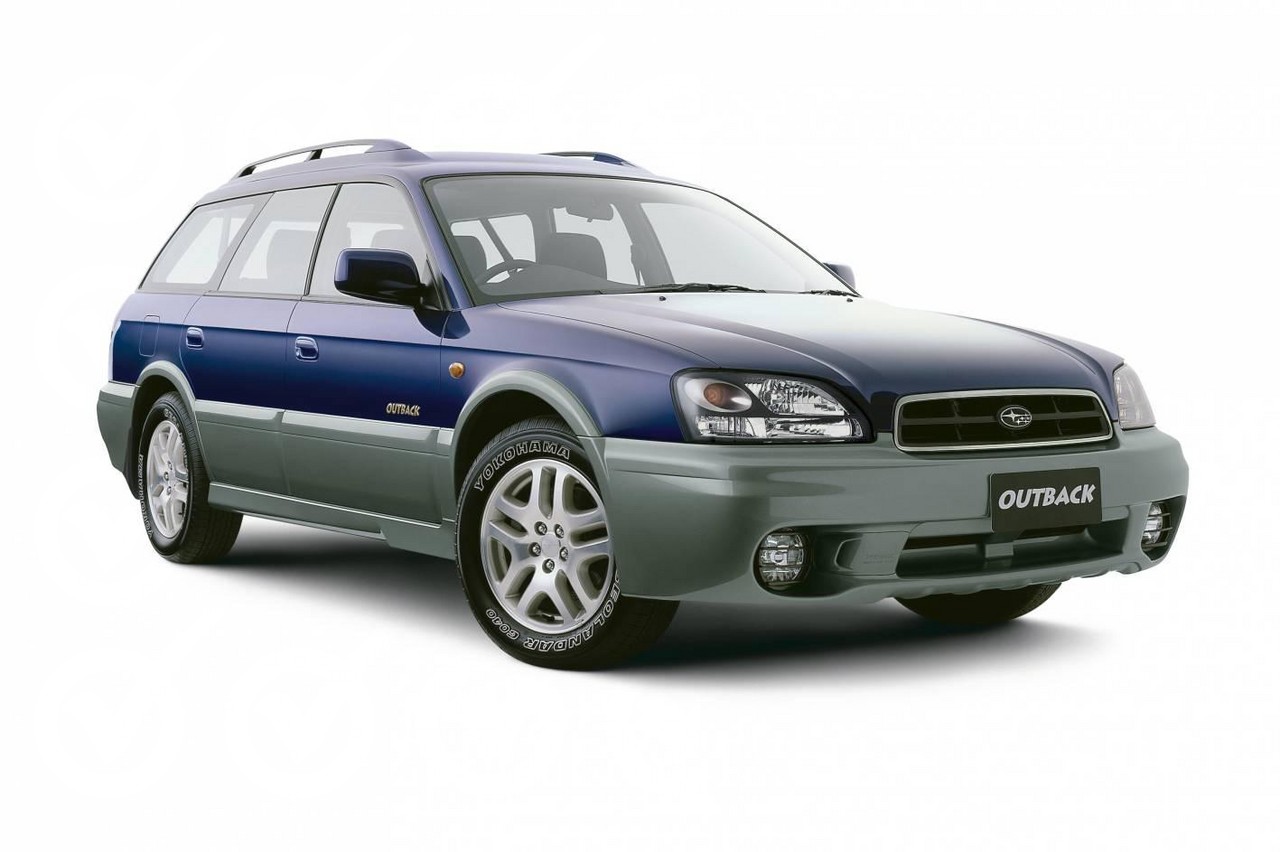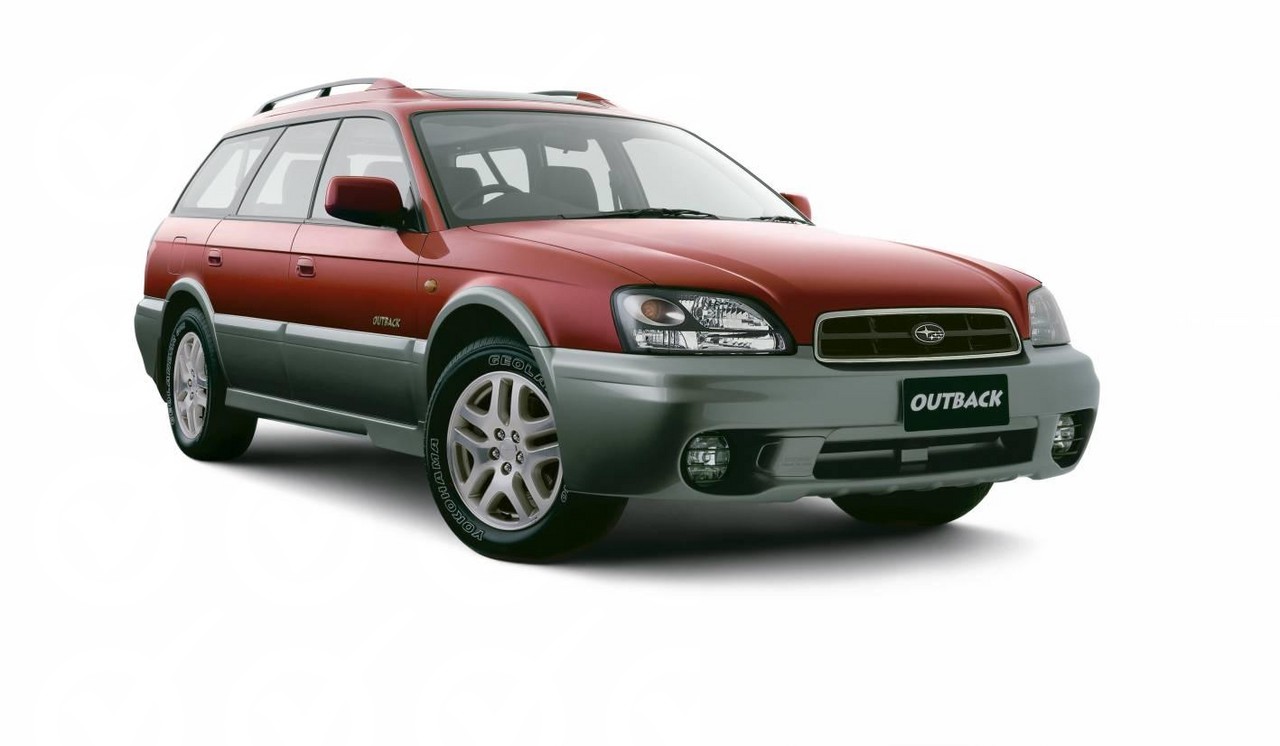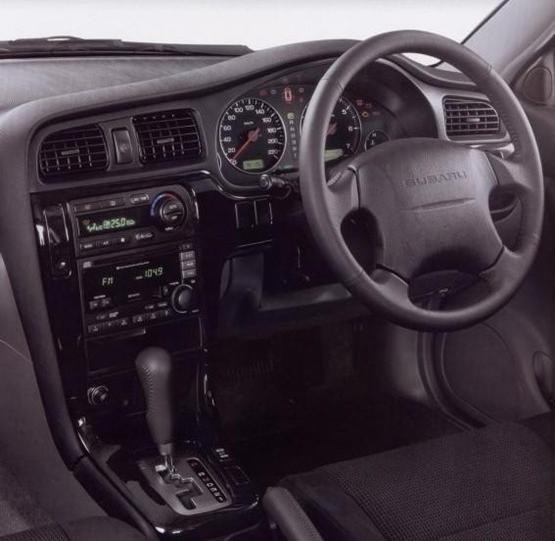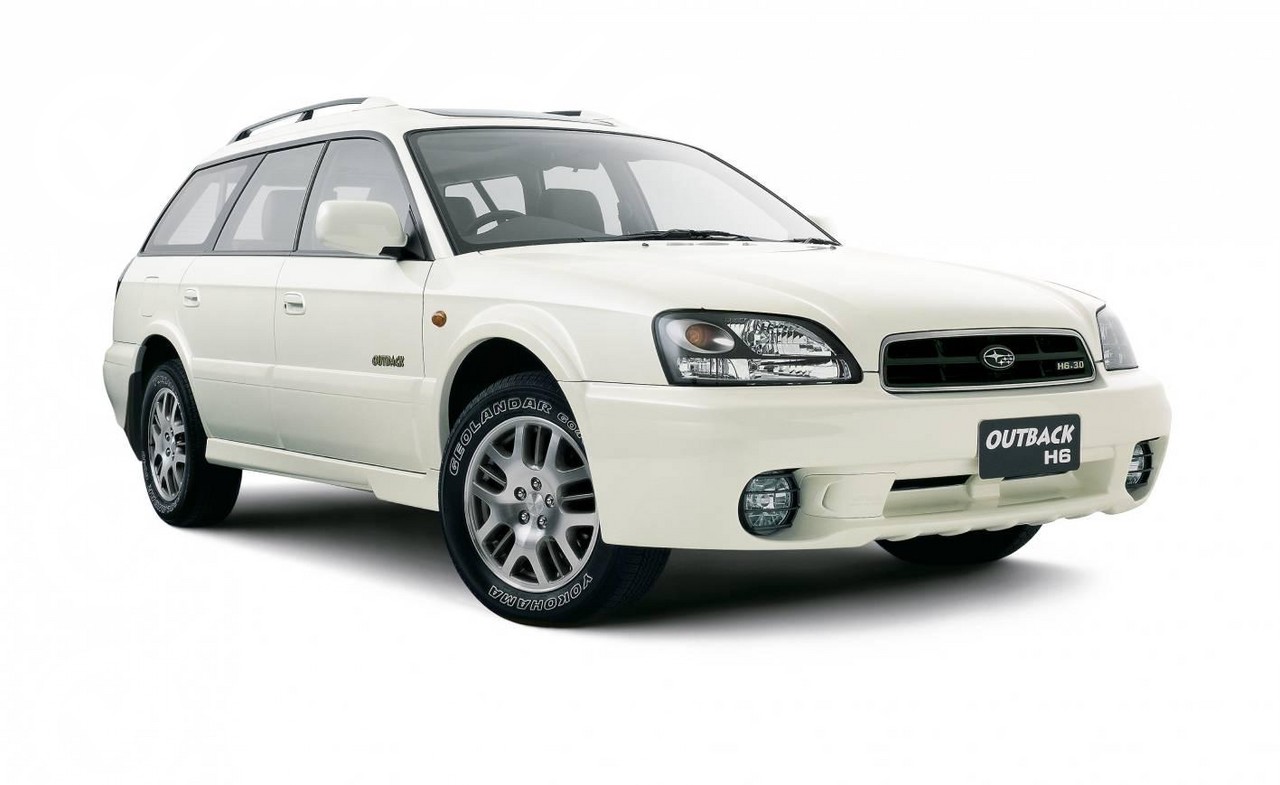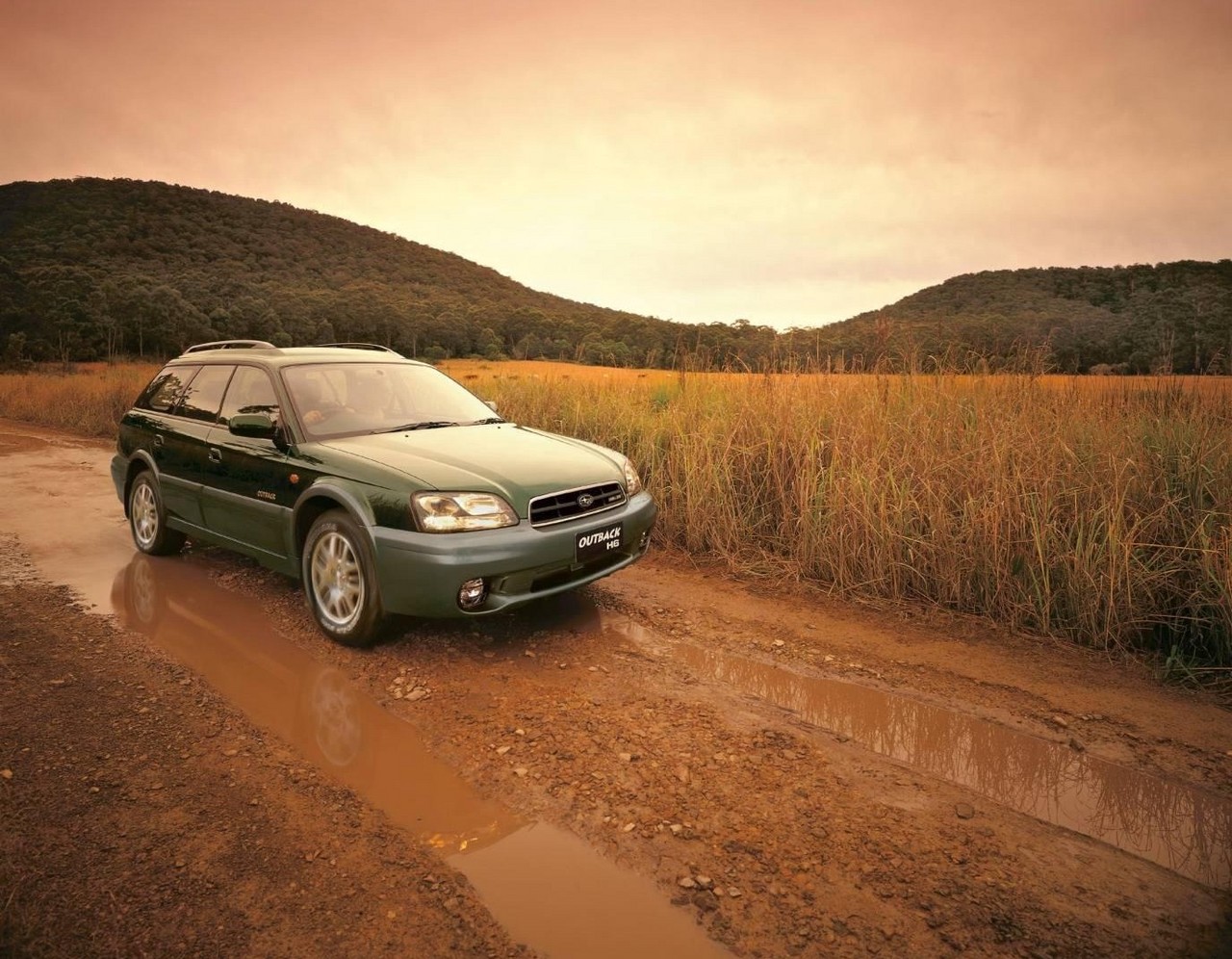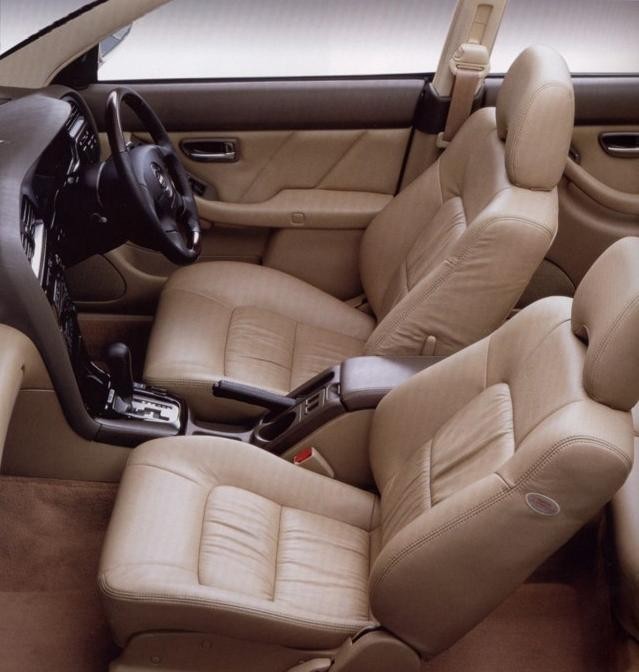
- Refined 3.0-litre six-cylinder petrol engine
- Accomplished ride/handling balance
- Supportive front seats
- High standard of interior fit and finish
- Performance from 2.0-litre engine with automatic transmission is only adequate
- Power delivery of Liberty B4 compromised by boost pressure drop
- Light steering lacks precision just off-centre and feel
- Flat rear seats lack support
- 2.5-litre EJ25 engine susceptible to head gasket failure
Review: Subaru BH.I Outback (1998-01)
Overview
Released in October 1998, the Subaru BH Series I (BH.I) Outback was a mid-size, all-wheel drive wagon. Manufactured in Ota, Japan, the Subaru BH Outback was initially available with a 2.5-litre horizontally-opposed (or flat) four cylinder petrol engine. In October 2000, the Outback range was expanded with the introduction of the 3.0i H6 variant.
EJ251 and EZ30D engines
Of the engines,
- For 2.5i variants, the 2.5-litre EJ251 engine had an open-deck aluminium alloy block with cast iron liners, an aluminium alloy cylinder head, a single overhead camshaft per cylinder bank (belt-driven), four valves per cylinder actuated by shimless buckets, multipoint sequential fuel injection and a compression ratio of 10.1:1; and,
- For 3.0i H6 variants, the 3.0-litre EZ30D engine had an open-deck aluminium alloy block with cast iron liners, an aluminium alloy cylinder head, double overhead camshafts per cylinder bank (chain-driven), four valves per cylinder, a variable intake system, a compression ratio of 10.7:1 and a dual-stage exhaust system.
While the 2.5-litre engine was available with five-speed dual-range manual and four-speed automatic transmissions, the 3.0-litre engines were solely available with the latter (see table below).
Body and dimensions
Relative to the BH Liberty wagon on which it was based, the Subaru BH Outback added side body cladding and had long-travel suspension which increased ground clearance by 45 mm to 200 mm. Compared to its BG predecessor, the BH Outback was 49 mm longer (at 4720 mm), 30 mm wider (1745 mm), 35 mm taller (1590 mm) and had a 20 mm longer wheelbase (2650 mm).
Suspension
Like the Liberty, the BH Outback had MacPherson strut front suspension and multi-link rear suspension.
| Variant | Editions | Years | Engine | Trans. | Peak power | Peak torque |
|---|---|---|---|---|---|---|
| 2.5i | N/A | 1998-01 | 2.5-litre EJ251 petrol F4 | 5sp man., 4sp auto |
115 kW at 5600 rpm | 223 Nm at 3600 rpm |
| Limited | 1998-01 | |||||
| Special Edition | 2001 | |||||
| 3.0i H6 | N/A | 2000-01 | 3.0-litre EZ30D petrol F6 | 4sp auto | 154 kW at 6000 rpm | 282 Nm at 4400 rpm |
AWD systems
For 2.5-litre BH Outback models with manual transmissions, the all-wheel drive system provided a 50:50 front:rear torque split. In the event that the wheels lost traction, the viscous coupling with the centre differential case would operate to direct up to 80 per cent of the engine’s torque to the opposing axle.
For 2.5-litre BH Outback models with automatic transmissions, the all-wheel drive system provided an 80:20 front:rear torque split. Instead of a viscous coupling, this all-wheel drive system included an electronically-controlled, hydraulic multi-plate transfer clutch. Torque distribution to the rear axle could be varied according to wheel slippage, throttle position and braking. The driver could also engage a 50:50 front:rear torque distribution for standing starts by moving the gear lever from ‘D’ into ‘2’.
For 3.0-litre BH Outback models, the all-wheel drive system provided a 45:55 front:rear torque split. This system utilised an electronically-controlled hydraulic multi-plate clutch in conjunction with a centre planetary-type differential. The torque distribution could also be altered according to variables such as throttle position and drive shaft speed differentials (i.e. front and rear).
Safety equipment
Standard safety equipment for the Subaru BH.I Outback included dual front airbags and ABS. The Outback 3.0i H6 was further equipped with electronic stability control and traction control (Subaru’s ‘Vehicle Dynamics Control’), while its B-pillar and door beams were also strengthened for improved occupant protection.
Features: Outback 2.5i and 2.5i Limited
Standard features for the Outback 2.5i included 16-inch alloy wheels, a six speaker sound system with CD player, climate control air conditioning, cruise control, front fog lights, 60/40 split and folding rear seats, remote central locking, power windows and mirrors, a tilt adjustable steering wheel, 12 volt power outlet, roof racks and an immobiliser.
The Outback 2.5i Limited was further equipped with a six-disc CD stacker, leather seats, leather-wrapped steering wheel and twin sunroofs; the 2.5i Limited was also fitted with a self-levelling rear suspension system.
Features: Outback 3.0i H6
Compared to the 2.5i Limited, the Outback 3.0i H6 was distinguished by its an eight-way power adjustable driver’s seat, a Momo mahogany and leather steering wheel, a leather-wrapped gear lever and woodgrain interior trim.
August 1999: Outback update
In August 1999, the Outback range underwent a minor update as standard features were extended to include a leather-wrapped steering wheel, handbrake lever and transmission lever, intermittent wipers and pollen filter. Other additions included intermittent wipers and a pollen filer.
2001 Outback 2.5i Special Edition
In May 2001, a limited-run 2.5i Special Edition model was released. Compared to the standard 2.5i, the Special Edition was distinguished by its power sunroof.
Review: Subaru BH.II Outback (2001-03)
Overview
Released in August 2001, the Subaru BH Series II (BH.II) Outback introduced revised styling, an updated interior and mechanical upgrades. For all models, the rear suspension was upgraded with additional supports for the rear sub frame. For the 2.5-litre four cylinder engines, oil pump friction was reduced by modifying the rotor dimensions and reduced friction oil rings were also installed. Furthermore, the manual transmissions were upgraded with a dual-mass flywheel for smoother clutch engagement and greater refinement.
Visually, the BH.II Outback could be identified by its new clear-lens headlights, revised front bumper, chrome grille surrounds and aluminium bonnet. Inside, there were darker fabrics and plastics, metallic highlights for the instrument dials and an adjustable centre rear head rest; the 3.0i H6 also received a switch to turn the Vehicle Dynamics Control system on or off, grey leather trim, a centre rear armrest and staged illumination for the instrument panel. For all variants, buyers were also supplied with two remote central locking key fobs.
August 2002: Outback update
From August 2002, the 3.0i H6 variant was available in standard and Luxury editions – the 3.0i H6 Luxury had the same features and safety equipment as the pre-August 2002 3.0i H6, while the new 3.0i H6 was similarly equipped to the entry-level 2.5i variant. As part of the August 2002 update, the 2.5i Limited was replaced by the 2.5i Luxury.
| Variant | Editions | Years | Engine | Trans. | Peak power | Peak torque |
|---|---|---|---|---|---|---|
| 2.5i | N/A | 2001-03 | 2.5-litre EJ251 petrol F4 | 5sp man., 4sp auto |
115 kW at 5600 rpm | 223 Nm at 3600 rpm |
| Limited | 2001-02 | |||||
| Luxury | 2002-03 | |||||
| 3.0i H6 | N/A | 2001-03 | 3.0-litre EZ30D petrol F6 | 4sp auto | 154 kW at 6000 rpm | 282 Nm at 4400 rpm |
| Luxury | 2002-03 |
Safety equipment
Compared to their BH.I predecessors, standard safety equipment for the BH.II Outback 2.5i was unchanged, while the 3.0i H6 gained front side airbags. From August 2002, however, the Outback 3.0i H6 was not fitted with front side airbags, electronic stability control or traction control – this equipment was reserved for the 3.0i H6 Luxury.
Euro NCAP crash testing
In Euro NCAP crash testing , the 2002 Subaru Liberty wagon (sold in Europe as the Legacy) – fitted with dual front airbags and front side airbags – received a four star adult occupant protection rating with a score of 27. In the offset crash test, protection of the driver’s head was rated as good, leg and foot protection as adequate, chest and left thigh protection as marginal, and protection of the right thigh as weak. In the side impact test, however, maximum points were awarded.
Features
With the exception of the August 2002 revisions, standard features for the BH.II Outback were largely unchanged.
Related links
